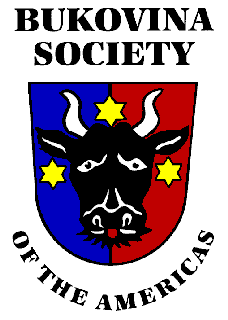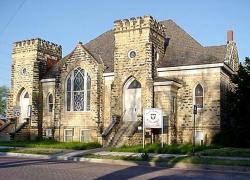RISE AND FALL OF THE MINING INDUSTRY
THE SETTLEMENT OF GERMAN POPULATION GROUPS IN BUKOVINA (II)
by Dr. Claus Stephani
Printed in
Neuer Weg (Bucharest), Vol. 30, Nr. 9094, 12. Aug. 1978, S. 3.
translated by.
Dr.
Sophie A. Welisch,
Posted on the World-Wide Web with
permission of the author
by the Bukovina Society of the Americas,
September 3, 2002.
Diese Seite auf Deutsch

In 1797 Karl Manz, Knight of Mariensee, activated the silver and lead works
on the upper course of the Golden Bistritz near Cirlibaba Nouă (Ludwigsdorf) and
Cirlibaba Veche (Mariensee); again it was Zipser miners and craftsmen who were
brought into the territory and settled in Bîrjaba (Byrschawa), Ciocănesti (Tschkaneschty),
Ţibău (Zibau), Şesure (Schessu), Rotunda, Iedu (Jedt) and Valea Stînei la
Cirlibaba (Hüttenthal). Copyright © 1991-2003, Bukovina Society of the Americas
When in 1892 the salt refinery in Pleschberg near Jakobeny was shut down and
relocated to Katschika, the Austrian administration in 1803 aroused interest –
[among the villagers of] Gura Putnei (Karlsberg), Glăjăria Veche (Althütte),
Glăjăria Noua (Neuhütte) – in the establishment of a fourth glass installation
in the Wojwodeassa Valley, in the area of Marginea (Mardschina); this new
German-Bohemian settlement was called Voivodeasa (Fürstenthal). At about the
same time further north on the right bank of the Small Sereth (River) another
German-Bohemian community, Augusta (Augustendorf) was founded.
Already as 1802 Bohemian glazier apprentices had registered with the Bukovina
Inspector of State Lands in Rădăuti (Radautz) and in the summer of 1803 were
settled in newly-established Fürstenthal. According to extant documents their
names were: Wenzel Feldigel, Anton Fuchs, Joseph Gaschler, Matthias Gaschler
both (concave glaziers), Franz Keller, Martin Stoiber (mason), Franz Weber, and
Johann Weber. Sebastian Schuster, a master glazier from Rehberg (Bohemia), who
in about 1800 was already in Radautz, recruited lumberers from his homeland
in 1802 for the installation in Fürstenthal. In the fall of
1803 Schuster along with twenty other woodcutter families arrived in
Mardschina. Here they were received by administrator Quirsfeld and treasurer
Hohenauer and temporarily accommodated on state-owned log cabins. These were
the families of Anton Aschenbenner, Johann Augustin, Adam Bähr, Sebastian
Baumgartner, Georg Beitl, Josef Druck, Martin Eichinger, Franz Geschwendner,
Martin Gnad, Karl Haiden, Wenzel Hoffmann, Georg Klostermann, Kaspar Kohlruss,
Georg Kufner, Wenzel Kufner, Martin Schulhauser, Andreas Schuster, Franz
Schuster, Johann Schweigl and Peter Wilhelm. The German-Bohemians by far did
not receive the state support which had been extended to the Swabians and
Franconians some twenty years earlier. Above all they did not receive fields and
meadows but only forest land, which first had to be cleared and made arable.
In 1805 a copper mine was opened in the upper Moldova Valley and further
north, on state-owned land between Pojorita (Poschoritta) and Breaza (Braass),
the mining village of Fundu Moldovei ( Luisental) and the hamlet of Piriul
Cailor (Pferdgraben) were settled by miners primarily from Gründler Land
(Zips). At that time Zipsers also took up residence in nearby Poschoritta in the
vicinity of Braass and in the valleys abutting the Moldova River, e.g., in
Izvoru (Quellenthal).
After two years, in 1807, an iron forge was built, where thirty-eight Zipser
miners had earlier settled in the forested meadows of Hurgisch above Wama. Thus,
after one year, 1808, there arose the community of Prisaca Dornei (Eisenau). In
1809 thirty-five Zipser families established the colony of Valea Stînei
(Freudenthal) in the nearby Moldova Valley; from here German woodworkers and
craftsmen also moved on to the already extant Romanian villages of Paltin (Ochsenthal),
Moldoviţa (Moldowitza), Deia, Frumoasa, Pleta (Pletta), Rusaia (Russaja).
The first wave of immigration by German-Bohemians waned by 1817 -- in that
year the last foresters settled in Frasin (Deutsch-Oberfrassin) and Paltinosasa
(Paltinossa) — to be followed by an even greater immigration wave between 1830
and 1840.
In 1835 some thirty-seven families registered with the Imperial and Royal
Economic Department in Solka for settlement on state lands. These immigrants for
the most part came from the Bohemian Forest, from Langendorf, Rehberg,
Sattelberg, Seewiesen, Unterreichenstein and other villages, and were settled on
the Humora Stream; thus arose the village of Bori.
In that same year, 1835 a second German-Bohemian colony, Dealu Iederii
(Lichtenberg), was established between Mardschina and Glitt; these villages were
founded by settlers for whom there had been no available land in Bori. With
further immigration of German-Bohemian farmers there arose the communities of
Poiana Micului (Buchenhain) in 1841 – where German-speaking Slovaks from the
Zips also settled – and Negrileasa (Schwarzthal). In 1843 an additional 200
German Bohemians arrived in Bukovina and settled in already-established
communities and in Putna and Putnathal.
The first Zipser miners received neither land nor the possibility of
acquiring it. In addition, they could be evicted without notice. Fields and
meadows for their farm animals were leased by the Religious Foundation on whose
lands they had settled.
The economic status of the “Swabian” farmers was more favorable; they
received homes and farm buildings, cattle – usually two oxen, one cow and one
calf in addition to essential farm equipment and household utensils. They owned
the property outright for which, but after two “free years,” they had to render
certain services to the state. In addition, each community got land for the
construction of a church and a school building.
The German inhabitants in the cities of Bukovina, in contrast to the rural
population, did not immigrate within the framework of a planned settlement. For
the most part they came to the city motivated by the greater economic
opportunity and earning potential it provided. Moreover, numerous Austrian
military and civilian officials, after their tour of duty, remained in the new
homeland. Nor did this migration from the western provinces of the Monarchy ever
end.
By the close of the 19th century the economic status of the
settlers east of the Golden Bistritz in the German mining colonies of Cirlibaba
Veche (Mariensee), Cirlibaba Nouă (Ludwigsdorf), Iacobeni (Jakobeny), Fundu
Moldovei ( Luisental), Prisaca (Eisenau) and Valea Stînei la Moldovţa
(Freudenthal), had continually deteriorated. Mismanagement of the Bukovina
mining industry, obvious since 1848, led to a rapid deterioration of the once
prosperous Zipser mining settlements. With the closing of most of the mines
after 1870 the majority of the German miners were reduced to chronic economic
distress. At that time the Zipser miners and foundry workers began to retrain.
They became foresters, rafters, and lumberers – occupations at which they work
in our time.
Top of Page
Diese Seite auf Deutsch
 Return to: Bukovina Families and Villages
Return to: Bukovina Families and Villages
 Visitors
since August 21, 2002
Last Revised:
09/25/13 09:13:12 PM Visitors
since August 21, 2002
Last Revised:
09/25/13 09:13:12 PM
|

